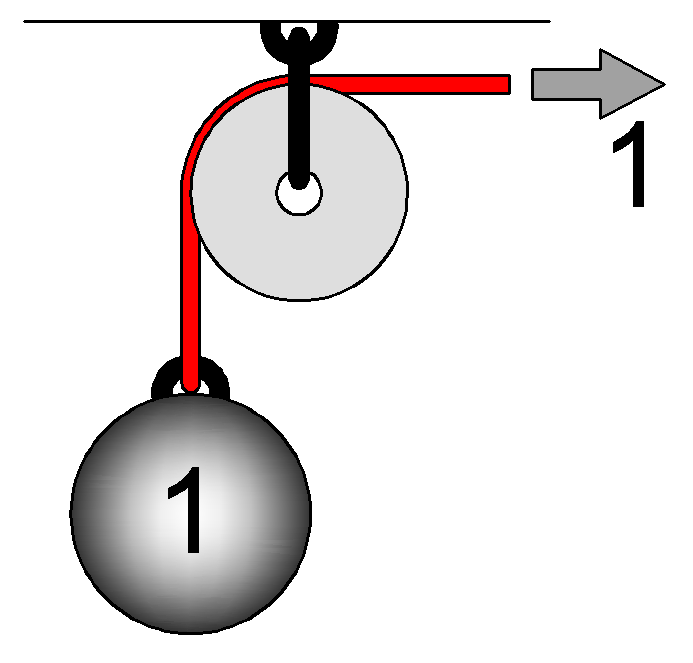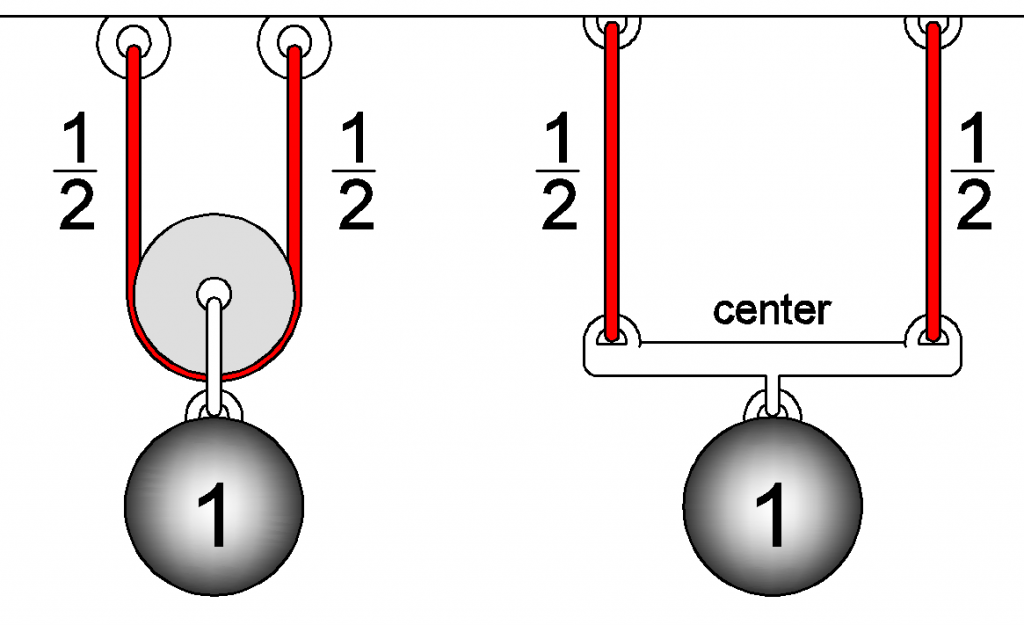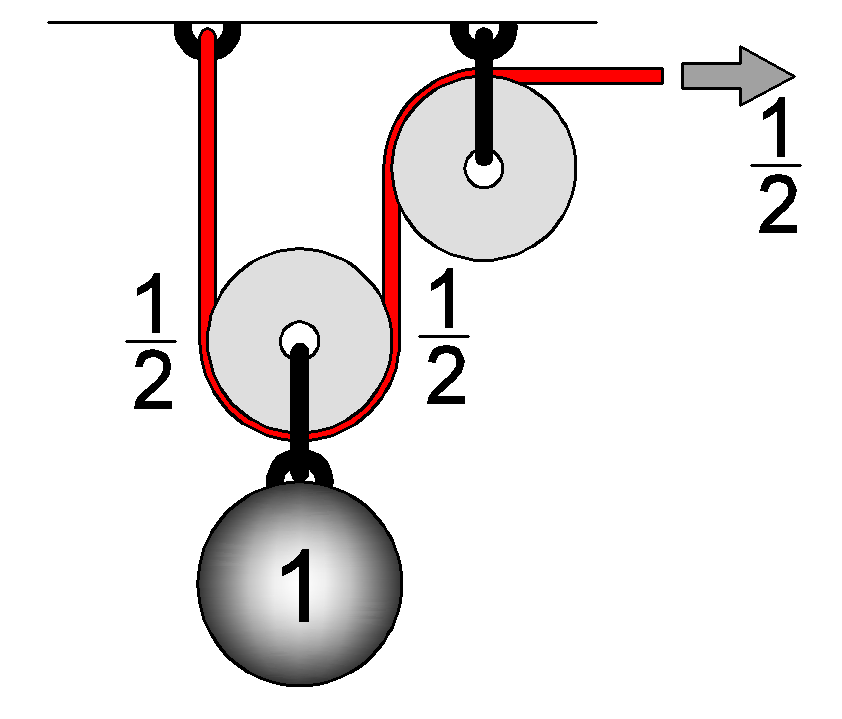A pulley is essentially a wheel (usually a grooved wheel or sheave) mounted on an axle.

To begin thinking about how pulleys work, remember that the force in the rope is always the same along its length. In the image below, each side of the pulley carries half the weight. This is the same as if the weight were supported by two separate supports.

The idea of dividing and redirecting a force can allow a pully to produce a mechanical advantage. In the image below, the weight is divided by two, and redirected. A person could lift the weight (ideally) using a force equal to half the object’s weight.

Pulleys can be used (or rigged) in various arrangements to form various tackles. The mechanical advantage can be increased many times over. Each time the mechanical advantage is multiplied, so is the length that the rope is required to be pulled.
